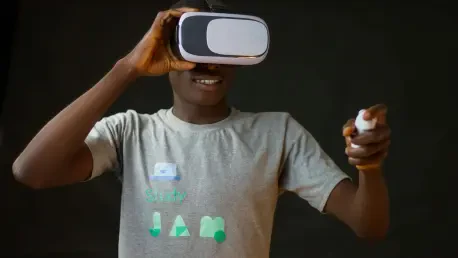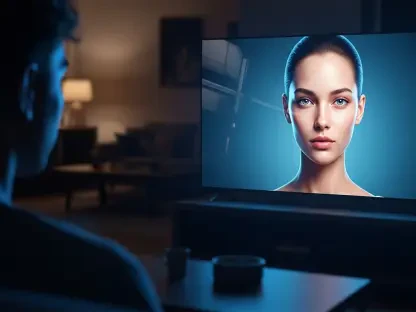In a world where augmented reality (AR) is rapidly transforming how people interact with digital information, Meta has taken a bold step with its latest innovation, codenamed Hypernova. These smart glasses, poised to redefine wearable technology, come with a striking design choice: a heads-up display (HUD) featured in only one eye. This decision has sparked curiosity and debate among tech enthusiasts and industry watchers alike. As AR continues to evolve from niche experimentation to mainstream utility, Meta’s approach raises important questions about balancing cutting-edge features with practical considerations like cost and user comfort. Delving into the reasoning behind this monocular setup offers a glimpse into the challenges and strategies shaping the future of consumer AR devices, while also highlighting Meta’s vision for accessible, functional technology.
Unveiling the Design Philosophy
Balancing Cost and Complexity in AR Innovation
Meta’s decision to equip the Hypernova glasses with a single-eye HUD stems from a careful evaluation of cost and technical constraints. According to insights from Meta’s Chief Technology Officer, Andrew Bosworth, implementing a binocular display—where both eyes receive digital overlays—would more than double production expenses due to the need for dual projectors and waveguides. Beyond the financial burden, such a system demands intricate disparity correction to prevent visual misalignment caused by frame flexing, which could lead to user discomfort. A monocular design, by contrast, simplifies the engineering process, reduces weight, and eliminates the need for complex adjustments like eye-tracking or rigid frames. This pragmatic choice reflects a strategic focus on delivering an innovative yet affordable product to a wider audience, even if it means forgoing a fully immersive experience in the initial release. The trade-off is clear: accessibility over extravagance in the early stages of AR adoption.
Addressing User Experience Challenges
While the monocular setup offers significant cost savings, it introduces unique challenges to the user experience that Meta has had to navigate. Bosworth has pointed out the risk of binocular rivalry, a phenomenon where the brain struggles to process differing inputs from each eye—one viewing the HUD and the other seeing the unadulterated real world. This mismatch can lead to discomfort for some users, with the severity varying widely from person to person. Such a drawback underscores the experimental nature of early AR wearables, where user feedback will likely play a critical role in refining future iterations. Despite this limitation, Meta appears confident that the benefits of a lighter, simpler design outweigh the potential for occasional visual unease. The focus remains on creating a functional tool for everyday tasks, positioning the Hypernova glasses as a stepping stone toward more seamless AR integration in daily life.
Strategic Implications for AR Market Entry
Pricing Strategy and Market Accessibility
A pivotal aspect of Meta’s rollout plan for the Hypernova glasses lies in its pricing strategy, which aims to broaden market accessibility. Industry reports from Bloomberg’s Mark Gurman indicate that the price has been adjusted downward from over $1,000 to approximately $800, a reduction likely enabled by the cost efficiencies of the single-eye HUD. This adjustment signals Meta’s intent to position the glasses as a viable option for a diverse consumer base, rather than a luxury item reserved for early adopters. Additionally, the inclusion of a sophisticated sEMG neural wristband for gesture control, bundled with the glasses, enhances the product’s value proposition. This combination of affordability and innovative features suggests a deliberate effort to carve out a competitive edge in the nascent AR market, where price often determines adoption rates. By prioritizing practicality over premium immersion, Meta seeks to democratize access to AR technology.
Future Roadmap and Industry Trends
Looking beyond the immediate launch, Meta’s vision for AR extends to more advanced systems, with a binocular successor, dubbed Hypernova 2, reportedly planned for release in the coming years, around 2027. This timeline reflects an understanding that current barriers—such as the high cost and complexity of binocular displays—are temporary hurdles in an industry poised for rapid growth. As production scales and component costs like projectors and waveguides decline, the feasibility of dual-eye HUDs will increase, paving the way for truly immersive AR experiences. The Hypernova glasses, with features like notifications, navigation, and real-time translations displayed in one eye, serve as a testing ground for consumer reception and technical refinement. This incremental approach mirrors broader trends in the tech sector, where initial products often sacrifice perfection for progress, setting the stage for transformative leaps in subsequent generations.
Reflecting on a Calculated Step Forward
Lessons from a Monocular Milestone
Looking back, Meta’s journey with the Hypernova glasses marked a defining moment in the AR landscape, driven by a calculated decision to limit the HUD to one eye. This choice, rooted in substantial cost savings and reduced technical complexity compared to binocular alternatives, underscored a commitment to practicality despite the acknowledged risk of binocular rivalry causing user discomfort. Priced at around $800, the glasses emerged as a surprisingly accessible entry into AR, blending utility with innovation through features like real-time captions and AI-driven responses. The intense efforts to meet tight deadlines, as seen in reports of extended work hours, highlighted the stakes involved in delivering this product on schedule. This initial foray laid critical groundwork, offering valuable insights into user needs and technical challenges that shaped Meta’s path forward.
Charting the Next Phase of AR Evolution
As the dust settled on this release, the focus shifted to actionable next steps for advancing AR technology. The industry began anticipating how Meta would leverage feedback from the Hypernova rollout to refine user comfort and expand functionality in future models. With a binocular version already on the horizon for 2027, attention turned to how declining component costs could enable richer, dual-eye experiences without prohibitive pricing. Stakeholders also pondered the potential integration of more robust eye-tracking solutions to mitigate visual discrepancies in upcoming designs. The broader AR community looked to events like Meta Connect for updates on timelines and enhancements, recognizing that each iteration would bring the dream of seamless digital-real world overlays closer to reality. This evolving narrative promised a future where AR glasses could become as ubiquitous as smartphones, driven by lessons learned from these early, strategic compromises.









